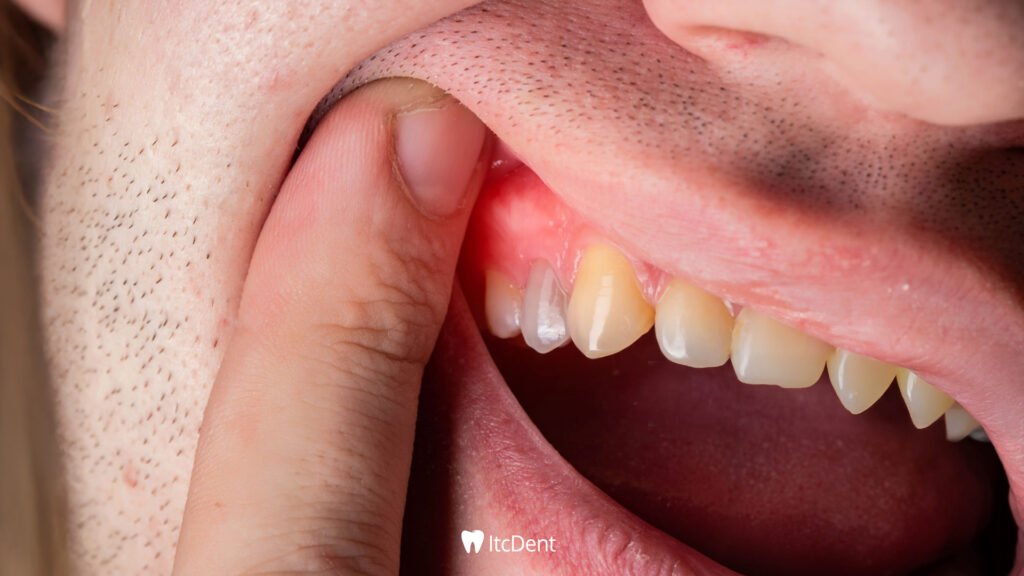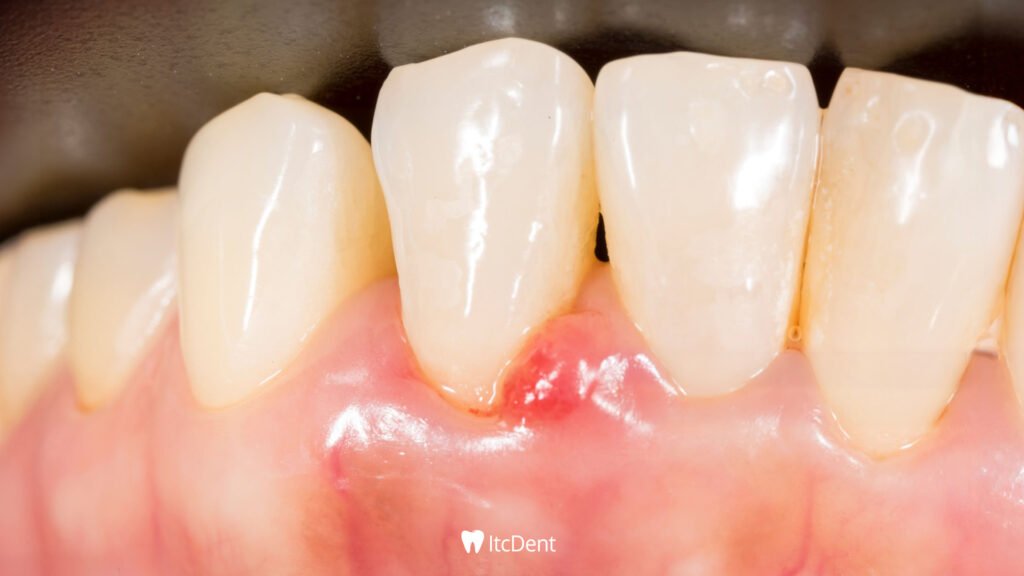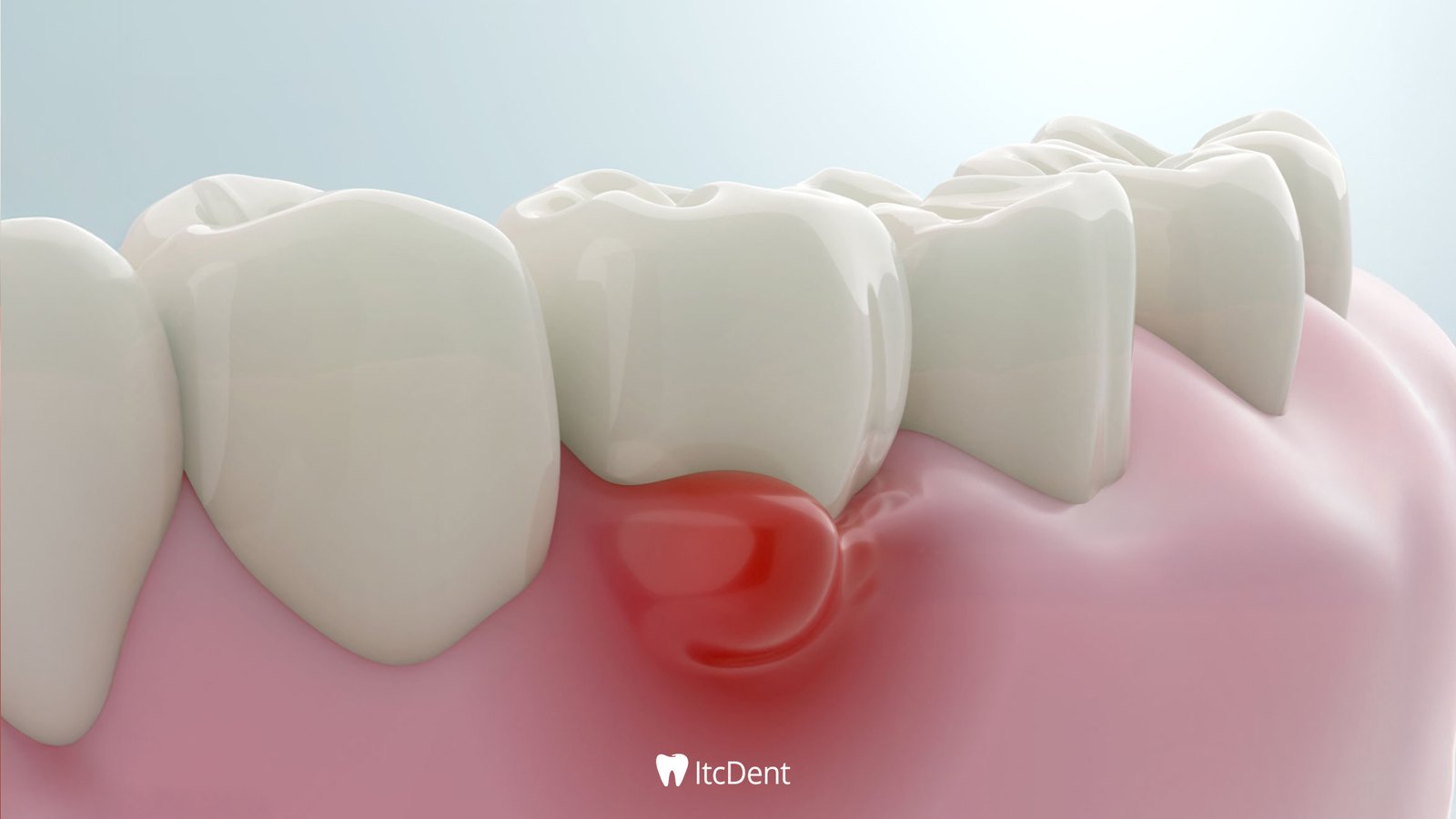Tooth Abscess
A healthy mouth structure not only means having a beautiful smile, but also directly affects many functions of our body, from digestion to the immune system. Unfortunately, neglecting oral and dental health can lead to many problems that can lead to serious health problems. Diseases that occur in the gums in particular create significant problems both in terms of aesthetics and quality of life.
Although gum problems are often underestimated, these conditions, which start with symptoms such as pain, swelling and bleeding, can turn into more serious disorders if left untreated. An abscess in the gums is one of the most common and disturbing of these problems. An abscess in the gums is a condition that threatens not only your oral health but also your general health, and it is of great importance to detect and treat it early.
What is a Tooth Abscess?
A tooth abscess is an infection chamber filled with pus that develops in the tooth or surrounding tissues. It usually occurs when bacteria enter or surround the tooth. The inner structure of the tooth, the pulp tissue, contains blood vessels and nerves. When bacteria reach these tissues, the body initiates a defensive response and inflammation occurs. This inflammation accumulates over time and manifests itself as a sac or swelling (abscess).
A tooth abscess can occur not only in the tooth itself, but also in the gums and surrounding tissues. In short; a tooth abscess is the result of an infection in the tooth or the tissues around the tooth and requires urgent treatment.

What are the Types of Abscesses?
A dental abscess usually occurs in three different ways. A periapical abscess is an abscess that develops at the root end of the tooth and is usually caused by the deepening of tooth decay and reaching the nerve tissue (pulp) of the tooth. Although these types of abscesses initially start with mild pain, they manifest themselves with symptoms such as severe pain, swelling and tenderness over time. A periodontal abscess is an infection that occurs in the gum and bone tissue surrounding the tooth.
This type of abscess usually occurs with the progression of gum disease and is triggered by factors such as the accumulation of dental plaque, deepening of gum pockets and bacterial accumulation in these areas. A gingival abscess is a more superficial type of infection compared to others and develops right on the surface of the gum tissue. It usually occurs as a small infection above the gum line, during tooth brushing or as a result of a foreign object (such as a corn husk or fish bone) penetrating the gum.
All three types of abscesses can cause pain, swelling, bad breath and even more serious health problems if not treated in a timely manner. Therefore, if you notice any symptoms of an abscess, you can contact us without delay…
Why Does a Tooth Abscess Occur?
The cause of a tooth abscess is directly related to our oral health habits. One of the most common causes is that the cavities that start on the surface of the tooth deepen over time and reach the living tissues inside the tooth, namely the pulp area, and cause infection there. Another common cause is gum disease; especially gum inflammation (gingivitis) or periodontitis, which is characterized by gum recession and bone loss, make the gums vulnerable and pave the way for bacteria to easily reach the tissue.
Traumas can also cause a tooth abscess; for example, fractures or cracks resulting from a blow to the tooth create a path to the inner tissues of the tooth, leading to the development of infection. In addition, incomplete or incorrectly performed dental treatments also pose a risk; especially during root canal treatment, not completely cleaning the infected tissues or incorrectly performing fillings can cause abscesses in the future.

Finally, neglecting oral health — not brushing, flossing or going for regular checkups — is one of the main factors that jeopardizes the health of your teeth and gums. These habits allow bacteria to accumulate in your mouth, increasing the risk of infection.
Abscess Symptoms
It usually manifests itself with symptoms that start suddenly and seriously affect the quality of life. The most common symptom is a throbbing and constant pain. This pain can get worse especially at night or when you go to bed and tends to spread; sometimes it can hit the ear, neck or jaw. Pain is felt during chewing on the side where the abscess is located, and this can even make eating difficult.
Swelling and redness on the face are common symptoms; a noticeable swelling can be observed especially on the cheek or under the jaw. You may have difficulty opening your mouth fully, and you may feel pain when talking or swallowing. A bad taste and odor occur in the mouth due to the inflammatory environment created by the abscess; sometimes you may even feel that the tooth is displaced or loose. In advanced cases, general signs of infection such as fever, weakness and swollen lymph nodes under the jaw may also occur.
Sometimes when an abscess bursts, a foul-smelling and bitter liquid is discharged into the mouth; however, this does not mean that the problem is completely solved. Because the source of the infection may still exist in or around the tooth. Therefore, even in such a case, I recommend that you consult a dentist without delay…

How to Treat
Treatment varies depending on the type and cause of the abscess, but the general path we follow is clear. In the first step, we drain the inflammation inside the abscess, reducing pain and pressure. If the infection has spread or is severe, antibiotic treatment is started. If the abscess originates from the root of the tooth, root canal treatment is performed to save the tooth; however, if the tooth is badly damaged, it may need to be extracted.
In cases of abscesses originating from the gums, tartar cleaning and root surface smoothing procedures are performed. In addition to all these, paying attention to oral hygiene and gaining habits such as regular tooth brushing are also important parts of the treatment.


